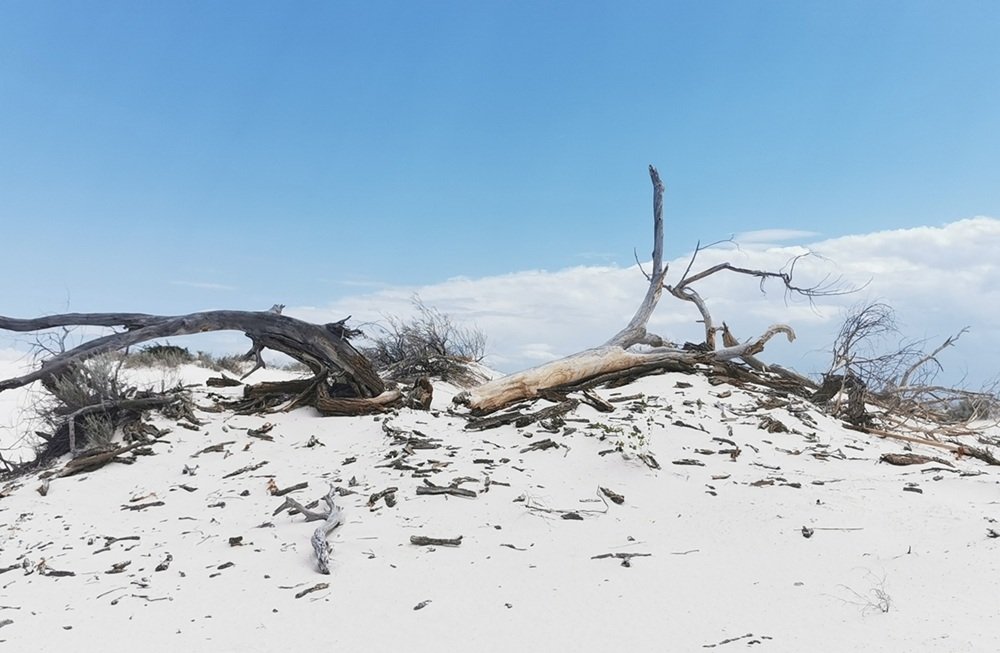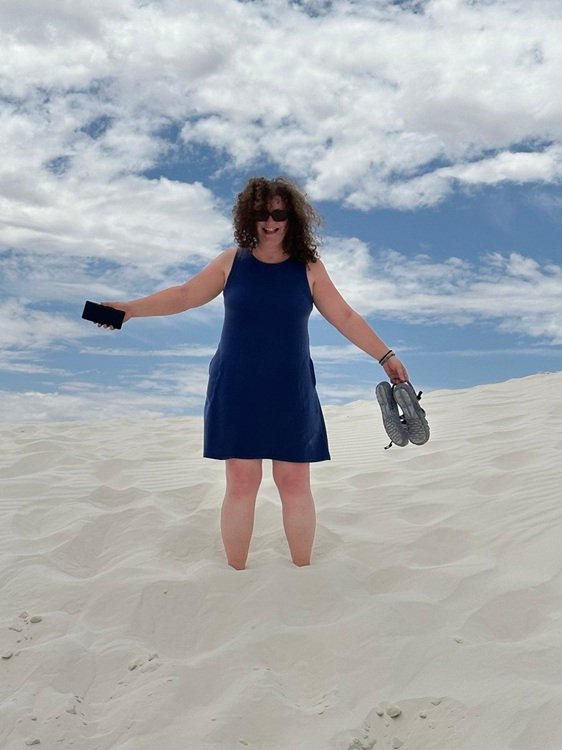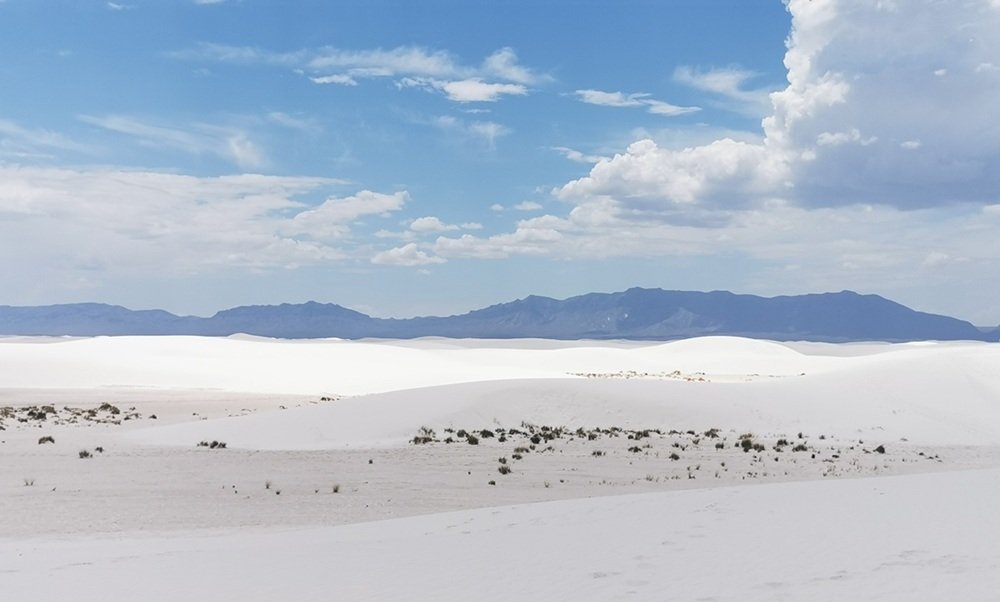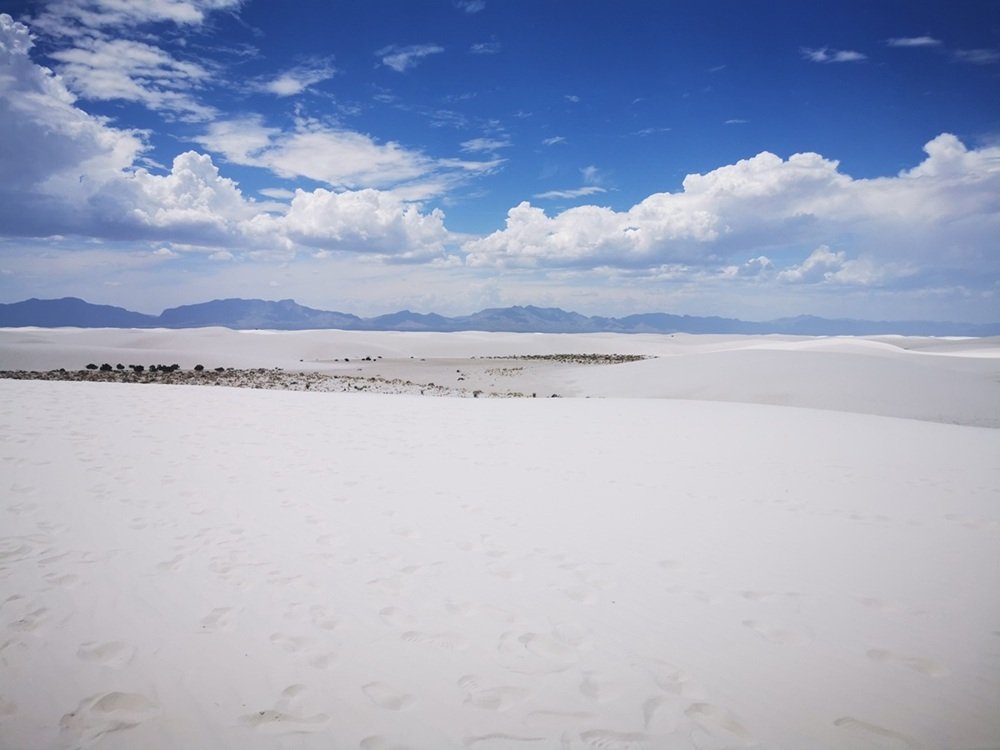What does White Sands National Park have to offer? Well, if you’re looking for somewhere that feels oddly reminiscent of a winter snowfall, but somehow never melts, this is your go-to place. On the other hand, if you’re looking for miles of pure sandy beach that won’t burn your toes, this is your go-to place.
White Sands is like no other place you’ve been. Unlike an idyllic snowscape, there’s no snow here. And unlike a tropical beach, there are no lapping waves. If you want the ocean, you’ll have to travel more than 500 miles to the Gulf of California.
Where is White Sands National Park?
White Sands is one of New Mexico’s two national parks (the other is Carlsbad Caverns) and is located in the Chihuahuan Desert. Now wait a minute. I know you’re probably thinking that the Chihuahuan Desert is south of the border and indeed it is. But it also runs through part of Texas and into New Mexico.
White Sands is at the northernmost edge of the 200,000 square-mile desert. It runs from near Las Cruces to the San Andres Mountains that you can see in the distance. Holloman Air Force Base and the town of Alamogordo (if you watched Oppenheimer, you’ll be familiar with it) are to the east of the park. Extending far beyond the park’s northern border is White Sands Missile Range.

Why So White?
This is not your run-of-the-mill beach. Nor is it your run-of-the-mill sand. It’s gypsum. That’s a mineral that we come across every day but don’t give it a second thought. Drywall, plaster, chalk in the classroom – they all contain gypsum.

There are only three gypsum dune fields in the world and all three can be found in – you guessed it – the Chihuahuan Desert. Of the three, White Sands is the largest. The dunes extend well beyond the National Park, covering 275 square miles.
The gypsum was formed about 8,000 years ago. This entire area was once a giant lake. The mineral was carried down from the mountains by rainwater and into the lake. As the area’s climate became more arid and hotter, the waters eventually evaporated, exposing the mineral beds below. The dunes are constantly changing with the winds, even to this day.
It’s the gypsum that makes White Sands so great to visit.
Because while most sandy beaches are made up of quartz, gypsum is softer and finer than regular sand. It also reflects about 80% of the sun’s rays, which is why it is safe to walk on and not hot to the touch. Just like magic! As I mentioned when I wrote about White Sands for Fodor’s, “it’s like walking in a giant vat of ultra-soft baby powder.”
Tips for Enjoying White Sands
To make the most of your visit, we recommend you pay attention to the following tips.
- Temperatures. It may look like snow and the sand won’t burn your feet but don’t be fooled. Summer daytime temperatures can top 100 degrees here. Plus the white sands give off an incredible glare. Sunscreen, sunglasses, and a hat are a must.
- Hydrate. Those temperatures also mean you need to stay hydrated. The White Sands Trading Post Gift Shop sells some food and drink options, and you can fill your water containers in the visitor center. There are no options for water further in the park. Whether you bring it with you or buy at the trading post, make sure you have plenty of water for each person in your group before you venture into the park. Park rangers suggest at least 1 gallon per person.
- Sledding. Who said sledding is just for winter? At White Sands, kids can enjoy sliding down the dunes any time of year. You can bring your own sled, but remember this is sand, and so not naturally slippery. You can rent or buy waxed saucers for sledding at the gift shop.
- White Sands Missile Range is strictly off limits to the public. Before visiting the National Park, check online to make sure that it is not closed during testing.
- Wildlife. Don’t think that a desert doesn’t have any wildlife. Sure there is no water supply, and temperatures can range between 0 degrees and 100 degrees Fahrenheit, and beyond. Nevertheless, there are plenty of species that have adapted to life at White Sands in all sorts of fascinating ways. Mice, lizards, spiders, and more have adapted to match the colors of the dunes. Interestingly, those same species living just a few miles outside the dunes have not adapted in the same way. In recent decades, a number of new species have been discovered in White Sands, some found nowhere else.

How to Get to White Sands
White Sands National Park is 51 miles northeast of Las Cruces, along I-70. Alternatively, it’s 51 miles southwest from Alamogordo on I-70. Both towns have hotels, restaurants, and stores.
The park is open every day with the exception of Thanksgiving and Christmas Day. Hours vary according to the season. Check the website for up-to-date information.


